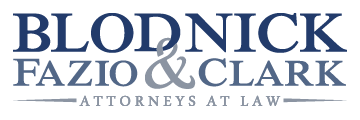
Federally, the basis for most employment discrimination lawsuits arise from Title VII of the Civil Rights Act (Title VII), and Title I of the Americans With Disabilities Act (ADA), which both apply to any business with 15 or more employees and which is open for business 20 or more weeks a year. In New York, employers are also subject to the New York Human Rights Law, which applies to any business with four or more employees. Title VII protects against discrimination based on sex, race, color, national origin and religion, while the ADA adds further protection against discrimination based on disability. The New York Human Rights Law further bars discrimination based on age, sexual orientation, marital status, military status, domestic violence victim status, criminal or arrest record, or predisposing genetic characteristics.
When an employment discrimination claim is put forward by an employee from a protected class, the claim can be judged according to one of two legal standards. The first standard is known as the “discriminatory intent” standard, which requires the claimant to prove that the discrimination they faced was the result of deliberate malfeasance on the part of their employer. However, the second standard, known as the “disparate impact” standard, instead merely requires the claimant to prove they were harmed by a discriminatory practice, even if that practice is facially non-discriminatory.
In other words, a policy that is seemingly non-discriminatory, carried out by people with no discriminatory intent, can still have a disparate impact on its employees, and thus become the basis for an employment discrimination suit. An employer does not even need to be aware of this disparate impact to be held liable for damages related to it. All that matters are that the policy exists, the disparity exists, and the impact is felt.
The good news for employers is that disparate impact cases aren’t necessarily easy to prove, and often rely heavily on expert testimony and statistics to prove their case. The bad news is it also means that these “disparate impact” policies can linger like unexploded landmines in your company’s official practices, unaddressed until they become the subject of litigation. By the time you receive notice that you’re being sued, it may be too late to correct your course.
So how do you protect yourself as an employer from these cases? Well, aside from the basics of encouraging an attitude of tolerance and attending Equal Employment Opportunity training, it may be worthwhile to review your own company’s employee roster and proactively locate potential discriminatory impact liability. After all, if you find and correct the discriminatory impact yourself, you’ll never need to worry about getting sued over it.
Blodnick, Fazio & Clark represents corporate clients in a range of business law matters, including employment law and discrimination claims. If you own a business and are concerned about discrimination claims, you should contact a skilled New York business law attorney. The New York business lawyers at Blodnick, Fazio & Clark are experienced legal professionals who can assist and guide you through the process. For more information or to schedule a consultation, contact our Long Island business lawyers at (516) 280-7105 or (631) 669-6300.


